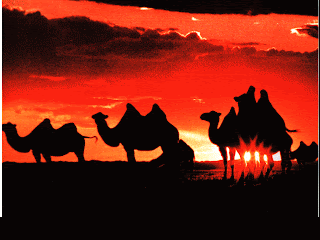 Information
Information
Undoubtedly, one of the main interests in traveling in Mongolia is the exciting discovery of the Mongolian nomadic lifestyle. On the edge of the 21st century, Mongolia remains one of the few countries to retain its ancient traditions and culture. The vast expanses of the steppes, the absolute magnitude, beauty and wonder of the Mongolian scenery are intertwined with the Mongolian nomadic lifestyle and renowned hospitality which has little changed through the passing of the time. The Mongolian culture is shaped by nomadism and the traditional dwelling of the nomadic Mongolian, the Ger, is the focal point of many customs and traditions. The mixture of these features with the Mongol myth of Genghis Khan is the basis of all the potential tours and opportunities. It could attract and fascinate both the soft adventurers interested in exploring the nomadic lifestyle and the intrepid travelers searching for peculiar experiences like horse riding, fishing or trekking. Population Geography The population of Mongolia is at present 2,475,400 people. The present yearly rate of population growth is estimated as 2.8 per cent. Two thirds of the Mongolian population is below 30 years old, and two fifths of the population is 14 years or below. Much of the population growth of Mongolia has been absorbed in urban areas. The present urban population is above one million, Ulaanbaatar having 846,500 inhabitants-one third of the total population of Mongolia. However, a significant part of the urban populations still live in ger (yurt) habitations on the town peripheries. While the average population density of Mongolia is just over 1,6 person per sq. km, the population density of South Gobi Province is only 0.3 per sq. km. About 75 per cent of the population of Mongolia speak Khalka Mongolian , the official language, while another 15 per cent speak other Mongolian languages. Ethnic minorities are mainly speakers of Turkic languages, such as Kazakh, Tuvinian, Urianhai and Hoton. Ethnic groups: 85% Mongol, mostly Khalkha Mongol. Also 7% Turkie (mainly Kazakh). 4.6% Tungusic and 3.4% other groups. Four million Mongols live outside Mongolia. Mongolian Geographic Geographic Situation Mongolia, covering an area of 1,564,100 square kilometers, lies in the heart of the Asian continent. It stretches about 2,400 km from west to east and about 1,260 km from north to south and bounded on the north by Russia and on the southeast and west by China. The total length of the country's boundary line is 8,158 km. Superimposed on Europe, Mongolia would stretch from Amsterdam to Moscow and from Copenhagen to Venice. Mongolia is mountainous country with an average altitude of 1,580 meters above the sea level. The lowest point Khokh-nuur in the east is 552 meters above sea level and the highest point is the mountain Nairamdal in the Mongolian Altai (in the west) which stands at 4,374 meters. The geography of the country is characterized by great diversity. From north to south it can be divided into 4 areas, mountain-forest steppe, mountain steppe, semi-desert and the desert. In the west- north the mountain ranges and ridges are overgrown with wild forests, big lakes and tempestuous rivers. The vast grasslands of the Asian steppe stretch across the eastern part of the country. The Gobi Desert lies in the south occupying somewhat less than one-third of the Gobi Region, the rest being semi-desert grassland. The typical landscape, a nature-lover's paradise, is an undulating steppe land providing fine pastures. The country is dotted with hundreds of lakes, the largest being Uvs-Nuur (covering an area of 3,350 square km), Huvsgul-Nuur (2,760 square km). Lake Huvsgul being also the largest fresh water lake in Central Asia, is unique with its natural beauty and is called as a "blue pearl of Mongolia".
Territory: 1,564,100 sq km
Population: 2,775,400(January 2008)Density: 1,6 per sq km
Climate: Continental, warm rainy summers and extremely cold winters. Sharp seasonal fluctuations and variations. Great diurnal temperature changes
Terrain: Mountains (40% of the territory) and rolling plateaus with vast semi desert zone in the south (Gobi).
Average altitude: 1580 m
Highest peak: 4374m (in the Altai)
Lowest point: 552m (in the east)Regions: 21 aimags (provinces)
Capital: Ulaanbaatar (1146 600. Jan. 2005)
Economy: Traditionally based on breeding livestock and agriculture, mining (copper, gold, coal and others)
Total livestock population: 23.9 million
Religions: Buddist Lamaism 94%
Language: Mongolian
Most spoken foreign languages: Russian, English, German and Japanese.
Time zone: +7 hours to GMT
Currency: Togrog, US$1=Tg1410 (Feb 2008)
No limit on foreign currency. Exchanging bureaus are at most hotels.US dollars are accepted and Cards, (American Express mainly Visa, Master card, Dinners club)
Communications: International telephones are available in hotels.
Mongolian National Holidays: January 1 New year
January 13 Constitutional Day
February 13,14 Mongolian New year/Tsagaan sar/
June 1 Mother and Children's day
July 11,12,13 National day (Naadam)
November 26 Independence Day
Note: Government offices open from Monday to Friday, from 9 am to 6 pm.


























